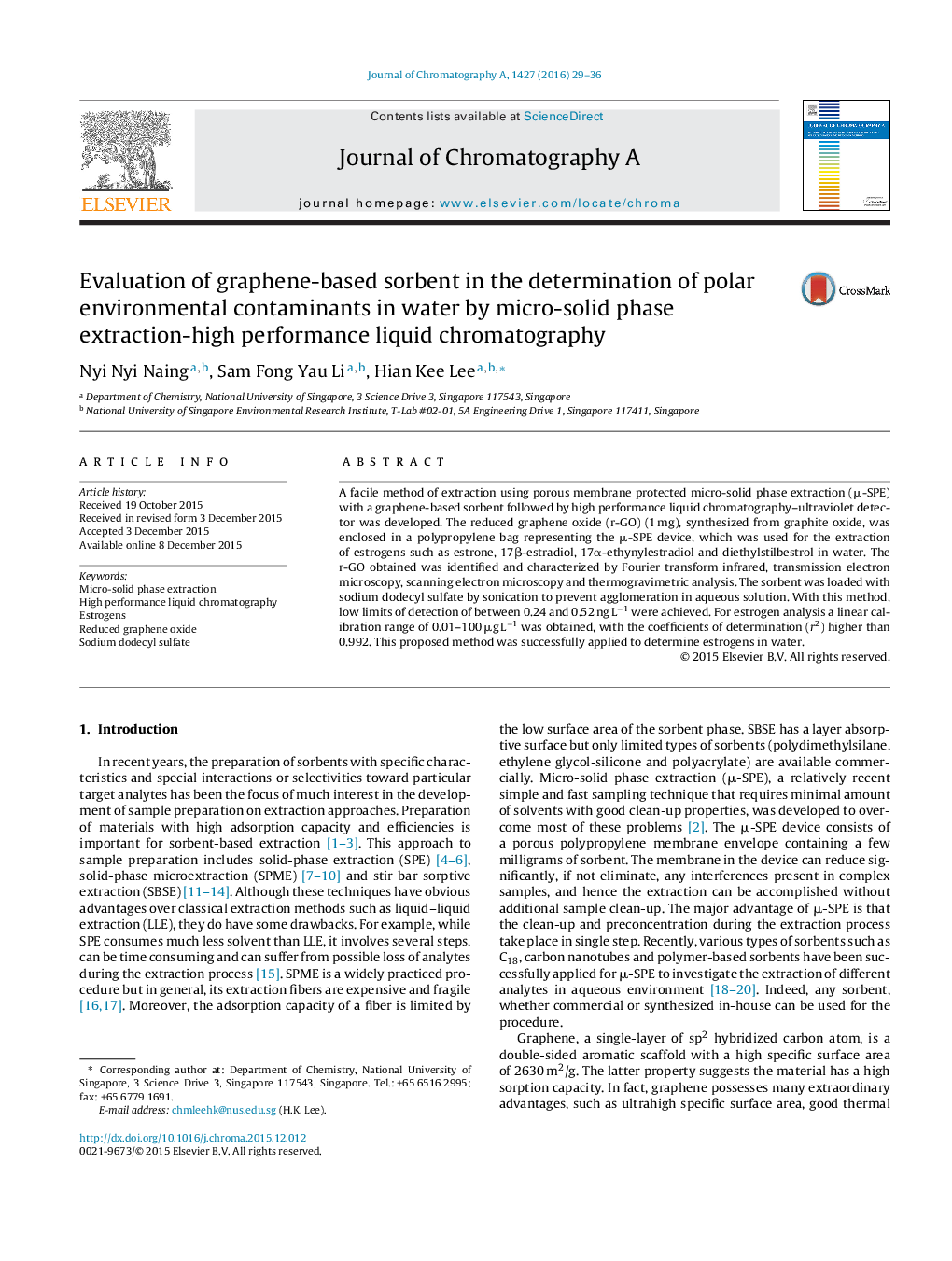| Article ID | Journal | Published Year | Pages | File Type |
|---|---|---|---|---|
| 1198595 | Journal of Chromatography A | 2016 | 8 Pages |
•Reduced graphene sheets were used in μ-SPE–HPLC–UV.•The sorbent was loaded with sodium dodecylsulfate (SDS) to prevent agglomeration in aqueous solution.•This procedure reveals good extraction efficiency for estrogens in water.•Four estrogens in canal water samples were determined by the developed method.
A facile method of extraction using porous membrane protected micro-solid phase extraction (μ-SPE) with a graphene-based sorbent followed by high performance liquid chromatography–ultraviolet detector was developed. The reduced graphene oxide (r-GO) (1 mg), synthesized from graphite oxide, was enclosed in a polypropylene bag representing the μ-SPE device, which was used for the extraction of estrogens such as estrone, 17β-estradiol, 17α-ethynylestradiol and diethylstilbestrol in water. The r-GO obtained was identified and characterized by Fourier transform infrared, transmission electron microscopy, scanning electron microscopy and thermogravimetric analysis. The sorbent was loaded with sodium dodecyl sulfate by sonication to prevent agglomeration in aqueous solution. With this method, low limits of detection of between 0.24 and 0.52 ng L−1 were achieved. For estrogen analysis a linear calibration range of 0.01–100 μg L−1 was obtained, with the coefficients of determination (r2) higher than 0.992. This proposed method was successfully applied to determine estrogens in water.
